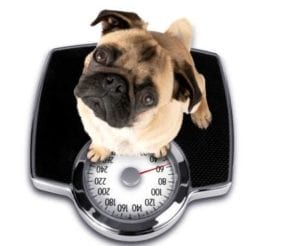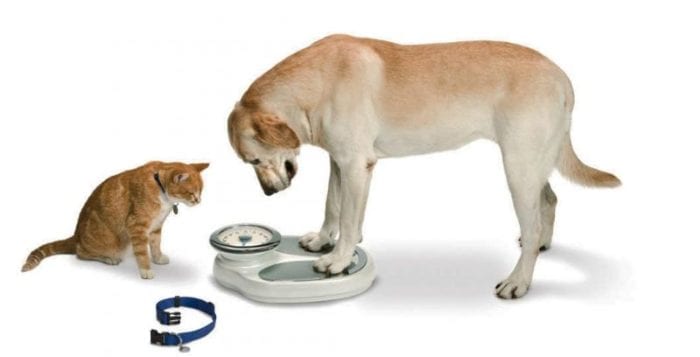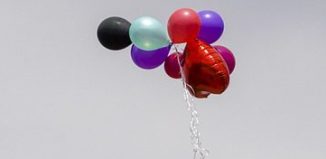Ask the Vet: Obesity – Sinking our teeth into our pet’s weight problems
By Matthew Kearns, DVM
 It’s 2017 and time to start our New Year’s Resolutions!! We all know the struggle with the battle of the bulge. We all want to look and feel good. We all know that regular exercise and diet is the key to a long, healthy life. Well, our thinking in that regard should extend to our four-legged friends. Obesity in this country is as big a problem in dogs and cats as it is in ourselves.
It’s 2017 and time to start our New Year’s Resolutions!! We all know the struggle with the battle of the bulge. We all want to look and feel good. We all know that regular exercise and diet is the key to a long, healthy life. Well, our thinking in that regard should extend to our four-legged friends. Obesity in this country is as big a problem in dogs and cats as it is in ourselves.
Obesity in our pets is more a concern of long-term health rather than self-esteem. Although we do not worry about coronary artery disease in pets, there are plenty of diseases that are directly linked to obesity as well as certain diseases that obesity will exacerbate.
There has been a proven link between overfeeding young dogs and growth abnormalities. In one study scientists were able to reduce the risk of hip dysplasia by 25 percent just by feeding one group of dogs less calories than another. We are not talking about starving dogs, just not overfeeding. All growth abnormalities will lead to an early onset of arthritis. Additionally, the added weight is a burden on already arthritic bones and joints in older pets.
Dog breeds such as pugs, Boston terriers, shih tzus, Lhasa apso, English bulldogs and Pekingese and cat breeds such as Persians, etc. (brachycephalic breeds or breeds with flat faces) are predisposed to breathing problems because of their anatomy, but obesity will exacerbate the respiratory problem. Severe obesity in any breed will lead to respiratory problems in any pedigree or mixed breed.
Certain conditions have been directly related to obesity. Hepatic lipidosis or “fatty liver disease” is a pathologic condition that can lead to severe liver problems and in some cases liver failure and death in cats, but severe obesity can lead to liver disease in both dogs and cats.
 Pancreatitis, or inflammation of the pancreas, is a serious (sometimes life-threatening disease in dogs and cats) that is a risk with obesity. There is also a higher incidence of diabetes in obese dogs and cats. Thus is believed to be related not only to damage to the pancreas but also insulin resistance (as in humans). Although obesity does not directly effect the heart, obesity in a pet that has a pre-existing heart condition will hasten the progression to heart failure.
Pancreatitis, or inflammation of the pancreas, is a serious (sometimes life-threatening disease in dogs and cats) that is a risk with obesity. There is also a higher incidence of diabetes in obese dogs and cats. Thus is believed to be related not only to damage to the pancreas but also insulin resistance (as in humans). Although obesity does not directly effect the heart, obesity in a pet that has a pre-existing heart condition will hasten the progression to heart failure.
How do we prevent obesity in our pets? Same as ourselves: Eat less, exercise more. Before radically reducing your pet’s food intake, it would be better to make an appointment with your veterinarian to have your dog or cat examined. This way both you and your veterinarian can identify obesity and make sure there is no underlying disease.
Some older pets will suffer from obesity from arthritis. It is not that they eat more but rather they exercise less because they are unable to move like they used to. Also an underactive thyroid and some other health disorders can lead to obesity.
There are medications available for many of the disorders that cause obesity, but they have to be diagnosed first. Also realize that spayed or neutered pets will gain weight if you do not monitor their food intake. Just because your pet was spayed or neutered does not mean that they will automatically become obese but they may be more at risk.
If your veterinarian feels that your pet is healthy then you can identify obesity and set realistic goals. Eliminating all the extras (table scraps, extra cookies, treats, rawhides, pig’s ears, etc) are a good start. These are all empty calories. If that is not working then you may need to cut back on the amount of calories from dog or cat food your pet receives. Either feed your pet less or consider one of the special weight reducing diet. These diets are available both commercially and through your veterinarian.
Exercise is both physically and mentally healthy for our pets as well as ourselves. Controlled exercise (short walks at first) not only burns calories but enhances the bond between our pets and ourselves. I know I could use the walks more than my dog.
For cats (especially indoor only cats) there are toys that you can play with them. Make sure these toys are not made of material that could be chewed off and potentially form an obstruction or if they do fray throw them away before they do become a problem. I used to tie a piece of string to my belt loop just to get my fat cat to chase me while I cleaned my apartment.
So, remember to have your pets eat right and exercise. That is the best way to keep them happy and healthy in the New Year.
Dr. Kearns practices veterinary medicine from his Port Jefferson office and is pictured with his son Matthew and his dog Jasmine.







